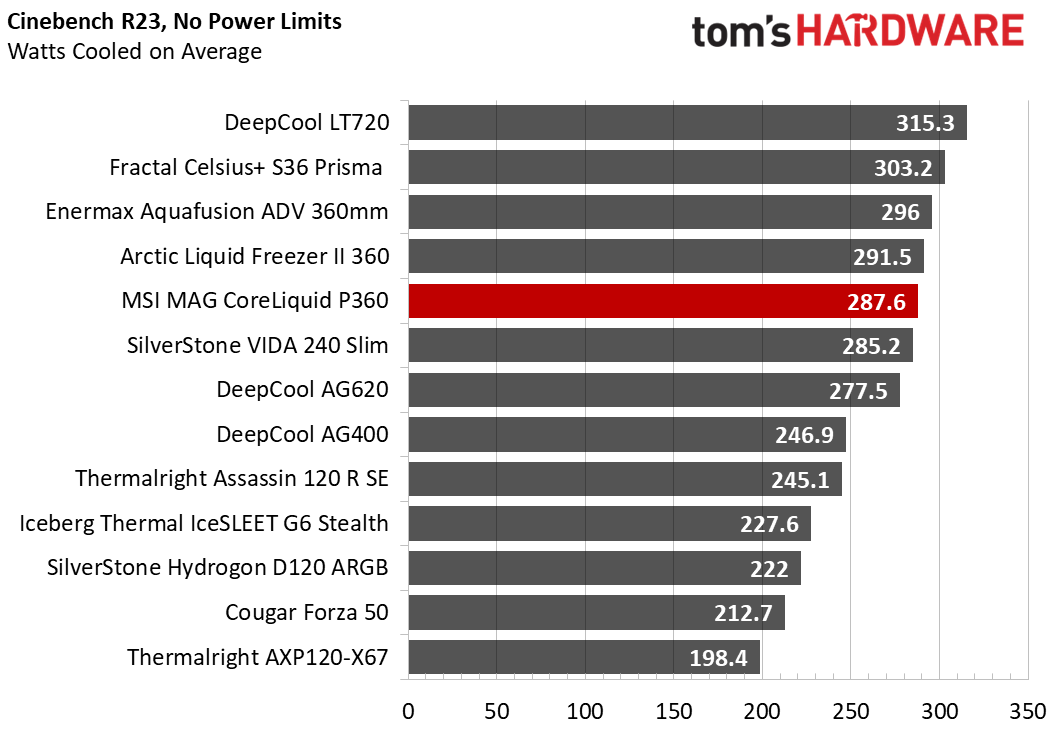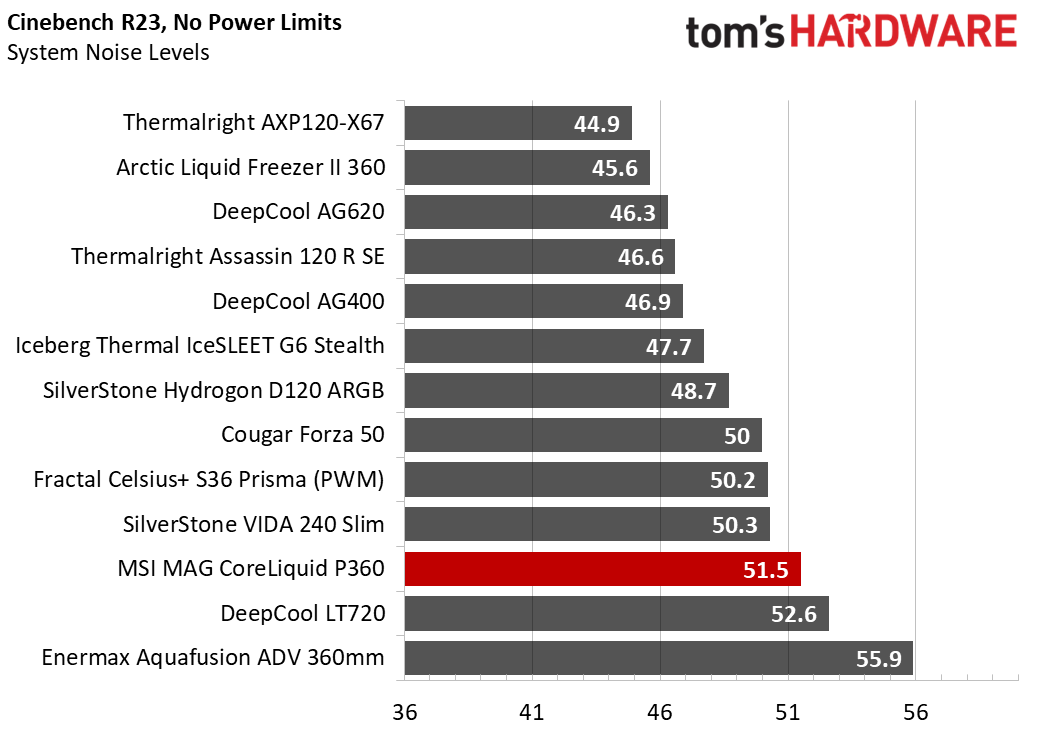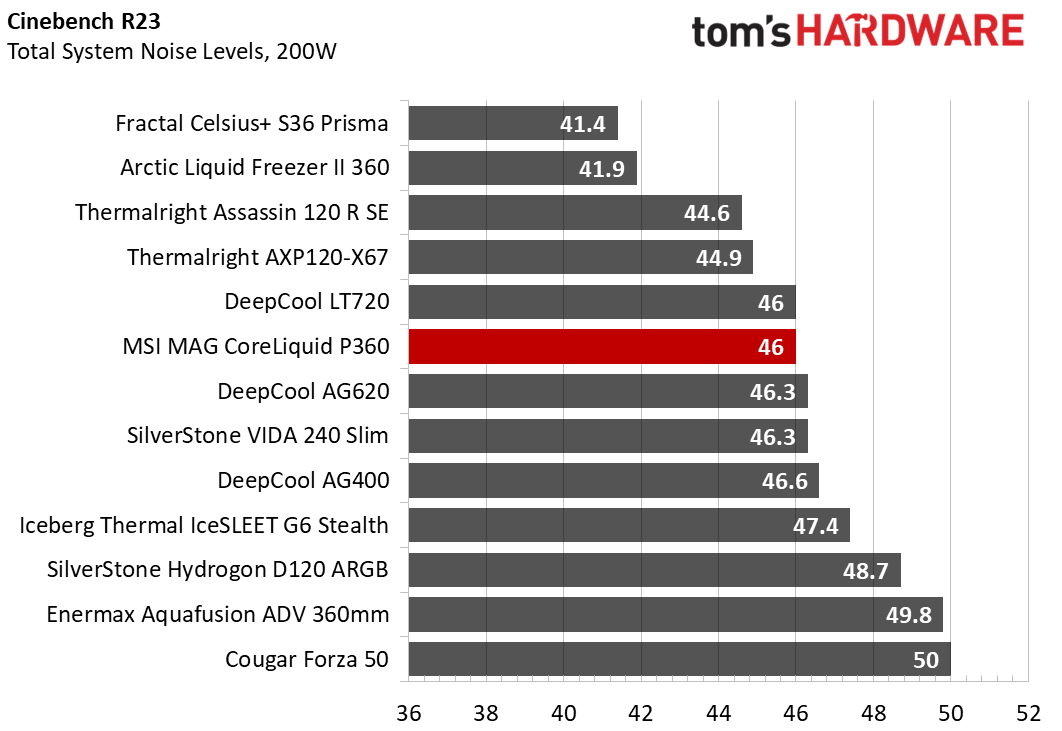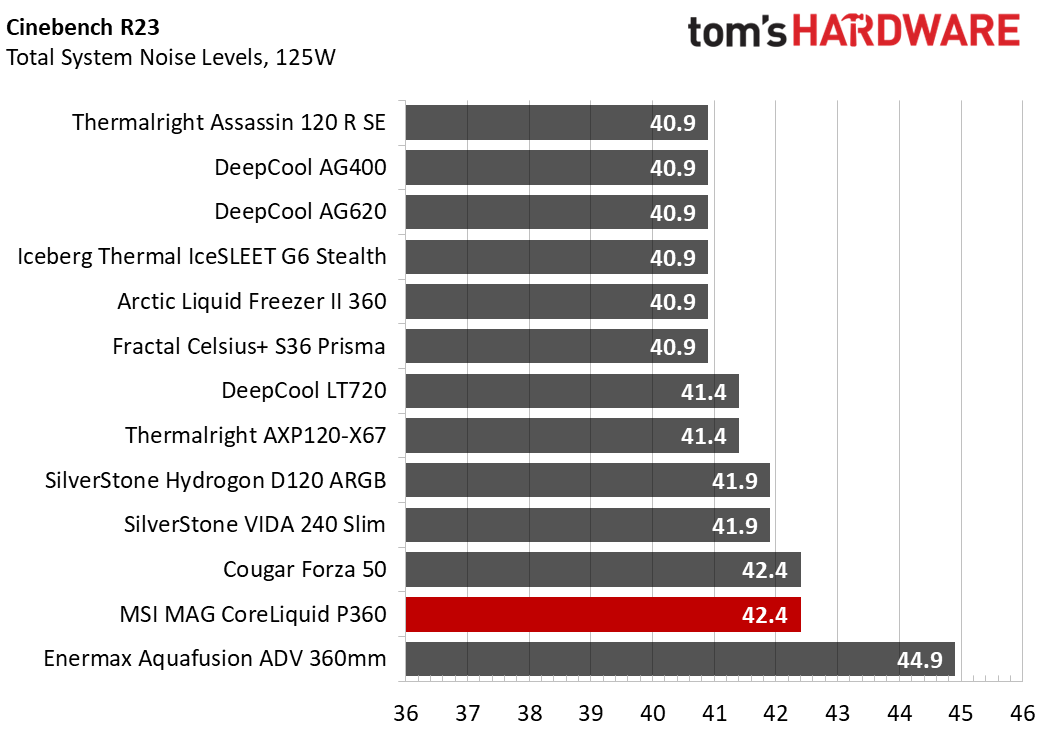Why you can trust Tom's Hardware
No Power Limits Cinebench Results
With Raptor Lake’s i9-13900K pushing speeds of 5.5 GHz or more, even the strongest of coolers hit TJ Max while running Cinebench R23 and other demanding scenarios. As the 13900K is designed to increase clocks and power until it reaches its top safe temperature, we’ll be comparing the overall benchmark score and the CPU’s clock speeds instead.
The results below are for a 10-minute testing run. But to be sure that was sufficiently long to tax the cooler, we also retested both Thermalright’s Assassin X 120 R SE and DeepCool’s LT720 with a 30-minute Cinebench test. The results didn’t change much at all with the longer test: The average clock speeds maintained dropped by 29 MHz on DeepCool’s LT720 and 31 MHz on Thermalright’s Assassin X 120 R SE. That’s an incredibly small 0.6% difference in clock speeds maintained, a margin of error difference that tells us that the 10-minute tests are indeed long enough to properly test the coolers.
Because of the difficulty of cooling the i9-13900K in this workload, the best way to compare coolers here is to record the average power consumption of the CPU. When it comes to total cooling capacity, MSI’s CoreLiquid P360 is capable of cooling roughly 287W. This puts it a bit behind the other 360 mm AIOs we’ve tested, but the P360 also has a lower price than the competition.
As Cinebench R23’s multi-core benchmark will push coolers to their limits, it’s also a great test for recording the worst-case scenario of fan noise levels. You might notice that our noise charts start at 36 dB. This is the noise floor of our testing environment; we’re unable to measure noise levels below this threshold. Keep in mind that noise measurements are logarithmic, meaning the differences between the noise levels of the coolers will be more noticable than these graphs would suggest.
When it comes to acoustic levels, the P360 is one of the louder units we’ve tested if the fans are running at full speed. It is quieter than the competing DeepCool and Enermax AIOs, but noisier than other coolers here.
We’re also showing the total Cinebench R23 benchmark scores to show illustrate little is lost – or gained – with different cooling solutions. Between the weakest and strongest coolers, there is a total benchmark score variance of roughly 13%.
MSI’s MAG CoreLiquid P360 does very well here, with a total score of 39,292, which makes it the third-strongest showing of the coolers we’ve tested with Raptor Lake.
Get Tom's Hardware's best news and in-depth reviews, straight to your inbox.
200W Cinebench Results
When restricting power consumption to a more reasonable 200W, MSI’s MAG CoreLiquid P360 does reasonably well, tying with SilverStone’s VIDA 240 for the fourth strongest result. But that’s only part of the story: How loud does it get when set to 200W?
Looking at acoustic levels when restricted to 200W, the P360’s results are roughly middle of the road. It’s quieter than six noisier coolers here, and the results are a tie with DeepCool’s LT720.
125W Cinebench Results

The lowest power limit I test at is 125W, mainly because this is also the lowest level where I can reliably measure noise measurements. Lower power consumption causes the noise of the CPU cooler to fall below the noise created by the system fans (even while restricted to 35% speed).
Looking at thermal results alone here, MSI’s P360 does well, taking fourth place in cooling performance. However, I feel that noise levels are more important at 125W. And in this metric, the P360 doesn’t do very well in comparison to other units. It’s not “loud” in any sense of the word, but it was noisier than most of the competing coolers we’ve tested.
Conclusion
When paired with Intel’s i9-13900K, MSI’s MAG CoreLiquid P360 is capable of cooling 287 watts in long-term workloads. The P360 offers a unique design with a radiator-integrated pump and is a good all-around cooling option with a value-oriented price tag of $119.99, though we've seen it drop even lower from some third-party sellers. Just know that the tradeoff for its lower price is fans that, while not loud, are noisier than much of the competition.
MORE: How to Buy the Right CPU Cooler
MORE: How to Check CPU Temperature
MORE: All CPU Cooling Content

Albert Thomas is a contributor for Tom’s Hardware, primarily covering CPU cooling reviews.
-
Phaaze88 "MSI’s MAG CoreLiquid P360 features a pump that’s integrated within the radiator...Reply
MSI claims two advantages from this design: longer life expectancy due to the pump being removed from the CPU’s direct heat..."
Maybe so, but if the user chooses to top mount it, this has the caveat of exposing the pump to air - longer life expectancy just went out the window.
A front mount is really the only option if the user wants it to last. Maybe add that as a con, or as a disclaimer on the front page?
Then there's the gunk issue that affects both MAG and MPG series. You don't hear about MPG due to the less attractive pricing, but Apaltek assembled them both and screwed up - then again, they made that same mistake with the Kraken M22...





